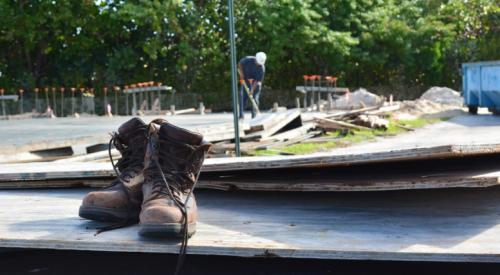| Contact Scott Sedam via e-mail at scott@truen.com
|
This discussion began in the April column and continued into May, considering predictions made by industry pundits that home building's "Top 20" will achieve total market domination within 10 years - perhaps as much as 95% or more.
Comparing the Top 20 national builders to strong locals in the factors of financing, people & talent, purchasing power, land acquisition and supplier/trade relationships, we saw that most of the advantages were with the locals - if they take advantage of them. We finish the list here.
Market Segments
Local builders have the unique ability to focus on a small market niche and become known as the true expert among potential customers. The locals can prosper by building only 200 affordable duplexes a year, for example, in developments as small as 20 or 30 units. Most nationals wouldn't touch it. With this expertise established, locals can prosper even in a down market, holding on to, or even gaining, market share.
The Top 20 builder invariably builds six, eight or even more distinct products in any one market. They may build a lot of things well but are rarely seen as the absolute best in more than one or two, if any. The result? Everything is harder for the big national - training, purchasing, land acquisition, managing plans and options, getting trades up the learning curve, etc. Life can be simple and highly profitable for the local builder of choice in a well-identified niche.
X Advantage: Local/Regionals
Performance Culture
You won't hear many Wall Street housing analysts or bankers cite organizational culture as a key success factor in home builder success. Yet ultimately, culture is the single biggest determinant of performance and here, once again, the local builders have the advantage. Turnover is one key indicator. The Top 20 builders have greater turnover than the locals at all levels, and the costs are huge. Another factor is that senior managers in Top 20 firms are frequently distracted by the demands of the parent - usually public - organization. These execs lament having to compromise what's best for the local division to please corporate. Local builders have far more flexibility to create their company or make changes that benefit the culture, simply because they don't have to get approval from anyone.
Now, I have seen some divisions of Top 20 builders with marvelous cultures. I also have met some local builders with positively defective cultures. But generally speaking, it is simply less difficult to build a high-performance culture in a smaller local builder than it is in a large Top 20. Ask anyone who has tried to do it in both worlds.
X Advantage: Local/Regionals
Entrepreneurism
Unless you have owned your own company, with all of your personal assets on the line, you won't get this one. A builder friend told me he knew he was an entrepreneur when he lay awake at night, wondering how he was going to make payroll. I asked him, was that before or after he had second-mortgaged his home? He exclaimed, "After!" We both laughed, then pronounced simultaneously, "Been there, done that."
When the true home building entrepreneurs who started from nothing hear the large nationals talk about being entrepreneurial, they just roll their eyes. I work with Top 20 executives on a regular basis. Many of them are talented, highly skilled and even brilliant. I'm not taking anything away from them by saying they are not entrepreneurs, and they don't behave like them. They are corporate executives who pretty much stick to their own firms and stay in their own world.
Want proof? Check out the attendee lists at Benchmark, The Lee Evans Seminar, The Presidential Seminar and the local HBA meetings. Ninety-five percent of the attendees are local builders - entrepreneurs looking for anything they can find to improve themselves or their firms. The local builders, by their nature, build companies that are quicker to respond to opportunities and challenges. For sure, they make mistakes. But they tend to cut bait and move on much more quickly than the Top 20. I absolutely believe that the professionalism that the large nationals have brought to home building during the past decade is one of the prime movers dragging our industry out of the 19th century and into the 21st. But home building was built upon, and will continue to be nourished by, the incredible entrepreneurial spirit that drives the local builders in every community in America.
X Advantage: Local/Regionals
That's three long columns and a conclusion that flies in the face of some of the housing industry's "experts." Yes, the Top 20 will continue to grow and prosper. They are searching for companies and land in most of the top 50 markets in the U.S. and Canada with big plans and big bucks. In addition, more of the nationals are getting into scattered lot building and moving toward smaller cities. But 95% of the market in 10 years? I don't think so. But if you still are skeptical, a quick look at the bottom line might convince you.
I picked five names at random out of the Top 20 builders and used the Web to look up their "pretax net" profit percentage on the Web. Each was between 5% and 6%. There are no doubt a couple of outliers high and low among the other 15, but I'm confident that 5.5% is a fair estimate of the average. The locals' figures are not public, but from my own clientele and a quick polling of other consultant friends in the industry, the typical pretax net of the best is 10% to 12%. Again, there are some higher and some lower. But let's go with an average of 11% pretax net. Simply put, the strong locals are making double what the average large national makes.
Two conclusions
First, the best locals are, indeed, exploiting their advantages. They are not just competing - they are thriving, making double the profit of the Top 20. These advantages are real, and the nationals would be wise to study the successful locals and understand what they do that's different. Most, I predict, will simply conclude I am out of my mind and pay no attention. Yet, a few will take up the challenge, learn from it and become stronger.
The second conclusion is that with their higher profit margins, the strong locals have more room to maneuver. A local builder making 5 or 6% (down from 11%) can still borrow money, keep its people and not have to hammer suppliers and trades and thus destroy the loyalty and relationships built during the good times.
A large national, however, making 2% or 3% (down from 5.5%) has unhappy investors, frustrated shareholders, Wall Street analysts writing unpleasant reports and people from corporate harassing them on a daily basis. The urge to both lay off trained personnel and try to beat the extra margin out of suppliers and trades is almost irresistible, yet the consequences are severe.
Despite all of this, I have some modest stock holdings in four of the Top 20, and I have no plans to sell. They do a lot of good things and will be rewarded for that in the market. But oh, how I wish I could invest in some of the best local builders that I have gotten to know. Now that would provide a return on investment. It may sound cliché to repeat again here that home building is still a local business - but I will, because it's true. Performance in the local market is still what counts. Strong local builders hold the best cards. The only question is, will they continue to play them? I am betting that they will.












